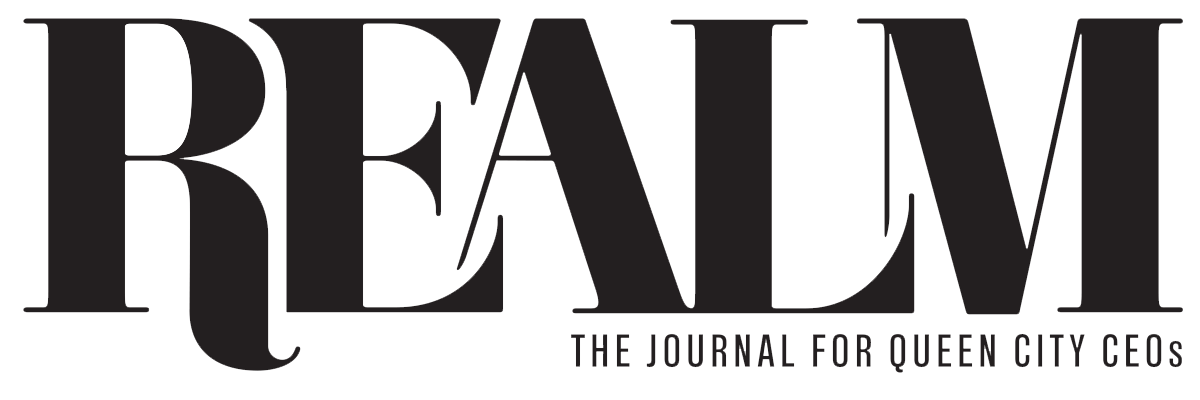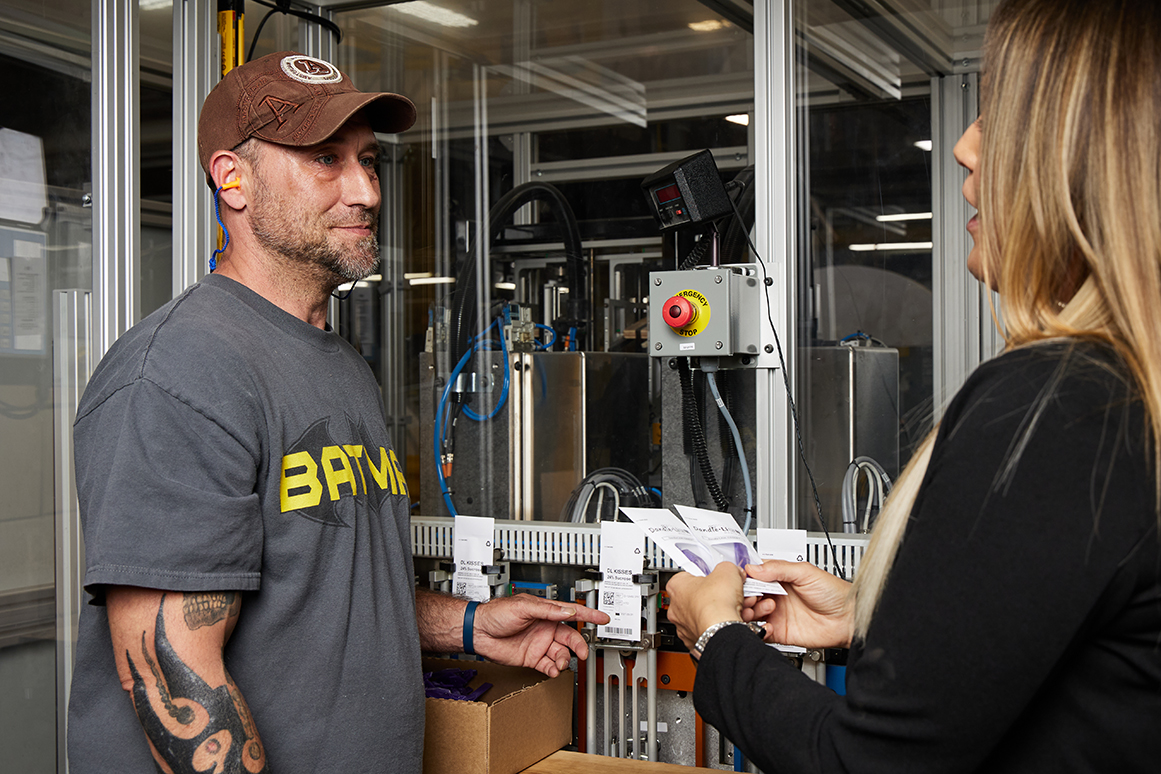In 2016, JBM Packaging was a 31-year-old family business with a problem: It needed more workers. Like many manufacturing employers, JBM’s laborers were aging out of the workforce and the company needed fresh hands to operate the labor-intensive mechanics of its paper-packaging products.
As recruitment efforts ensued, however, it didn’t take long for second-generation owner Marcus Sheanshang to realize that the company’s primary strategy—hiring non-college-bound students out of high school—was not a viable solution. “We were completely disappointed,” he recalls, adding that no matter how much pizza and bus transportation they provided they “couldn’t find kids who wanted to work.”
Then, through Crossroads Church, Sheanshang, who serves as president and CEO of JBM, caught wind of ministry efforts inside a local correctional institution. He reached out to an organizer of the ministry and realized there was a large population of people getting out of prison who’d be looking for work but would also face prejudiced barriers to employment.
At first, Sheanshang notes, “We were really trying to answer a strategic problem we had.” But as JBM began pursuing the possibility of hiring formerly incarcerated individuals, he realized the opportunity was far greater than just filling shifts. It became a chance to change lives and build a better business.
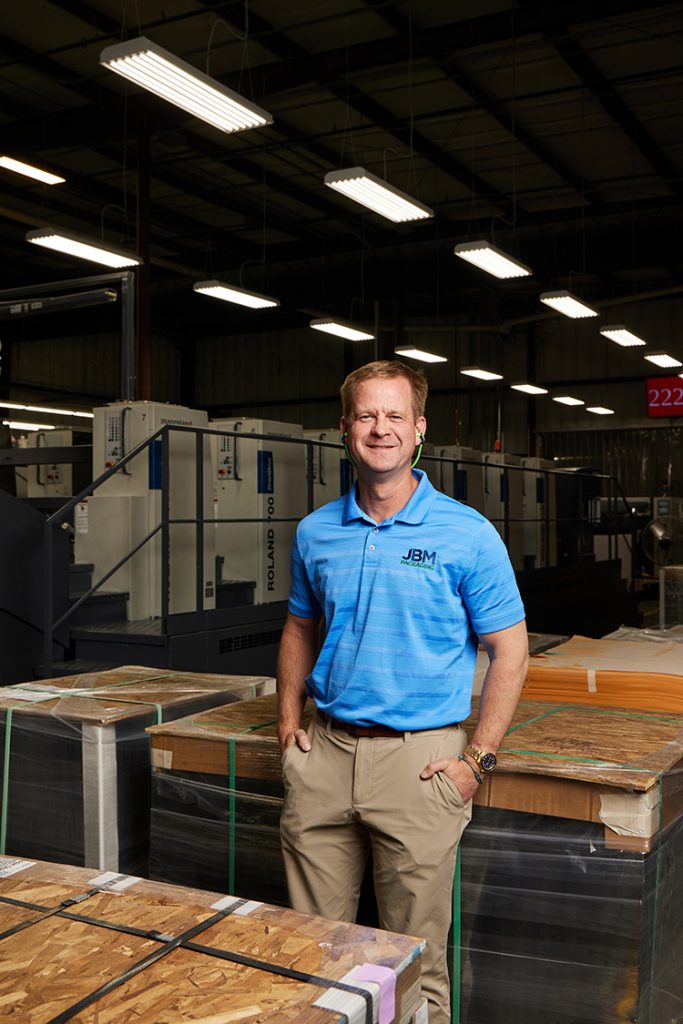
Sheanshang and his team did their research. They consulted with Dan Meyer at Nehemiah Manufacturing, the region’s first and largest second-chance employer, which opened in 2009 and has grown year-over-year into a business with $150 million in annual revenue. Of Nehemiah’s 300 team members, roughly 80 percent are second-chance employees; most are formerly incarcerated, but they also include those recovering from substance abuse, those emerging from homelessness, and survivors of human trafficking.
JBM set out to implement its own second-chance program, which Sheanshang decided would not include those who’d been convicted of sex crimes, crimes against women or children, or crimes involving violence. The company’s hiring niche ended up focusing on those with drug-related criminal offenses, which included tangential crimes like burglary or theft largely driven by money to buy drugs.
Despite their research and good intentions, JBM hit some hiccups out of the gate. “We were probably not well versed as how to handle some of the situations,” Sheanshang admits candidly.
Initially, company leadership limited intel about second-chance employees to those in the highest echelons of management, not wanting new hires to be judged unfairly by floor managers or other team members. The staff didn’t appreciate that decision. “They felt left out,” Sheanshang says, acknowledging their perspective. “I would want to know, too.”
The company then embraced a more transparent approach, clueing all team members into the second-chance program while still not explicitly “advertising” which employees were hired after serving a sentence.
In 2019, a few years into the program’s early iterations, JBM also changed its program terminology from second chance to Fair Chance, feeling that “second chance” sounded too much like “second-class citizen,” Sheanshang says. “We wanted to put a more positive label on it.”
The program took yet another pivotal turning point when an employee placed a comment into the company’s anonymous comment box: “I don’t want to work with these people.”
JBM had a decision to make: Would they risk losing current employees by developing the Fair Chance Program? Sheanshang’s answer was clear. “This is who we are now,” he says. “If you don’t want to work with ‘these fair-chance people,’ then this might not be the place for you any more. It was the proverbial stake in the ground.”
Today, JBM has 155 employees, 69 of whom are in the Fair Chance Program. That’s 45 percent of its workforce. “It’s helping the business without a doubt,” says Sheanshang.
Because of its fair-chance program, JBM was able to launch a new labor-intensive product line that required minimal training. It was an ideal opportunity to vet second-chance employees quickly without sinking multiple months of training into staffers who weren’t ready to commit to ongoing employment.
JBM has even begun offering employment within correctional facilities. At the Lebanon Correctional Institute, JBM has placed three pieces of manufacturing equipment on which inmates can learn trade skills that will translate to employment at JBM once they’re out. Best of all, the inmates earn an income in the process. “We just hired a guy three weeks ago who left prison with $4,000,” says Sheanshang.
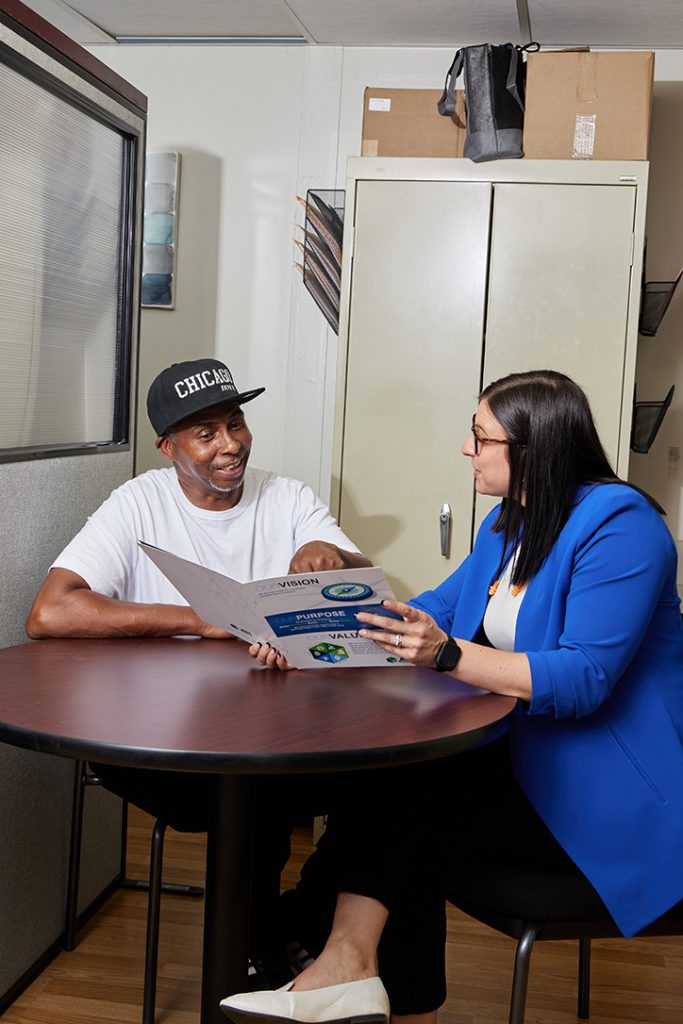
Being a Fair Chance or second-chance employer can be an enormous differentiator when competing for new business. All else being equal in terms of products and prices, JBM can tell prospective clients, “When you send us work, you’re helping people get back on their feet,” which really resonates with certain prospects, Sheanshang says. “Even if they don’t buy from you, they’re interested. I think it gives us another bite out of the apple when trying to win new work.”
In some cases, he says, clients are happy to pay a premium to partner with a purpose-driven company. That approach also spurs elevated levels of employee loyalty, especially among the more educated and upper-management positions. Sheanshang recognizes that many of his highest-level employees have ample opportunities to work elsewhere but stay with JBM because “they feel good about what they do.”
“Millennials and Gen Z are deeply purpose driven,” says Kristen Schumacher, chief marketing officer of Nehemiah Manufacturing and a Millennial herself. “They want more than a job. They want to be part of something meaningful. Our mission to build brands, create jobs, and change lives resonates strongly with them.”
Schumacher says it’s valuable insight for employers looking to fill their talent pipeline to know that current and upcoming generations want to work in mission-oriented environments. These companies not only provide employees with purpose, but they also build employee loyalty.
Employee loyalty at JBM is also built from an intentional strategy to promote from within, including those who enter the company through the fair-chance program. Amanda Hall is a Fair Chance employee hired by JBM one month after her prison release in 2019. She is now JBM’s talent acquisition and training specialist and has personally trained Sheanshang’s own children in equipment operations within the family business.
Success stories like Hall’s are the fruit of the “people pipeline” that addressed JBM’s initial pain point nine years ago, and it continues to be a viable personnel strategy going forward as the company grows. “You need to have a people strategy,” Sheanshang says. “Where would we be without those people?”
Like most new business initiatives, second-chance employment programs come with front-end costs and risks. It’s not a journey to embark upon lightly, or alone, without a network of support services.
JBM employs two full-time life coaches who meet with each Fair Chance employee for 30 minutes each week, a significant investment of the company’s time and resources that Sheanshang insists is crucial to the program’s success. Life coach meetings are mandatory for JBM Fair Chance employees for the first six months of their employment, during which the professionals deliver a more comprehensive level of support than what a typical HR department can offer. People re-entering society after incarceration often experience unstable or unsafe housing, unreliable transportation, child support issues, or medical snags—any of which may impede their ability to maintain steady employment. “They’re a flat tire away from their world going out of control,” says Sheanshang.
Because a full-time job is often the glue that holds together all the other pieces of a fragile life, JBM’s life coaches help connect people to the support services they need to stabilize factors outside of work. “They are Switzerland, a third party, a safe conversation,” says Sheanshang, who also personally meets with each employee at the 60-day mark of his or her employment.
JBM’s support network includes social services programs like CityLink, Financial Peace programs, felony-friendly landlords, and Wheels, a ministry that repairs donated vehicles and gives them to those who qualify. Wheels has donated 45 cars to JBM employees, including Hall.
All that said, even with the best intentions and most strategic supports in place, JBM’s Fair Chance Program doesn’t guaranteed perfection. People leave, and some relapse. It’s unrealistic to expect that every employee who was given a second chance will stick around to fulfill the investment put into them; JBM’s Fair Chance turnover is 21 percent, but Sheanshang is content with that figure. “Not everybody is ready for us,” he says.
JBM’s vision is long and nuanced, and ultimately it’s bigger than the immediate bottom line—though, as JBM has seen, having an empathy-centered business strategy has paid off both in company culture and on profit spreadsheets. In a business that seeks to give people a second chance for the lowest points in their lives, the more the business grows, the more people they can help. “Without profit, there is no purpose,” says Sheanshang. “This is a beautiful marriage of the two.”

Businesses that are interested in the mission-minded approach of a second-chance or fair-chance program but don’t have the infrastructure, resources, or operations needed to employ formerly incarcerated individuals will find several local organizations willing to assist. Cincinnati Works coordinates an alliance of businesses, human service agencies, faith-based ministries, and justice groups under the Beacon of Hope banner. The program works with employers and individuals alike to maximize the chances for successful employment.
The Recovery Friendly Hamilton County (RFHC), founded in 2022, serves as a bridge between the business and recovery worlds. According to the National Survey on Drug Use and Health, approximately 23 million Americans are in substance abuse recovery, and the National Institute of Occupational Safety and Health says 60 percent of those are employed in the workforce.
RFHC Coordinator Tyler Meenach, who worked in correctional rehabilitation for a decade prior to helping launch RFHC, says the vision was to establish a framework to coordinate with businesses to help them effectively manage substance-use disorder among their personnel.
A 2022 survey conducted by ForsMarsh found that people are more likely to feel comfortable disclosing substance use problems or asking for help with a substance use disorder when their manager has directly stated that employees can share those concerns. People in recovery are also more likely to take action when they notice a coworker may be struggling with substance use disorder.
By creating RFHC-guided workplaces that allow employees to discuss and disclose substance use issues in safe environments, businesses create cultures that reduce stigmas and open avenues for help and continued recovery. Among RFHC workplaces, only 15 percent reported that stigma against individuals recovering from substance use disorder exists in their own workplace culture; 65 percent of employers noticed a decline in stigma after certification.
To become a RFHC Workplace, employers must engage in a certification process that includes training on recovery-friendly practices, a formal declaration of their RFHC status to their employees (often through a company-wide email), orientation training, and a visible list of RFHC resources in an accessible location within the company. Business perks of certification include cost-saving connections in the form of reimbursement programs such as recovery training or drug testing, life-saving first-aid supplies, optional avenues for recruitment, and public recognition for the company for its recovery-friendly orientation.
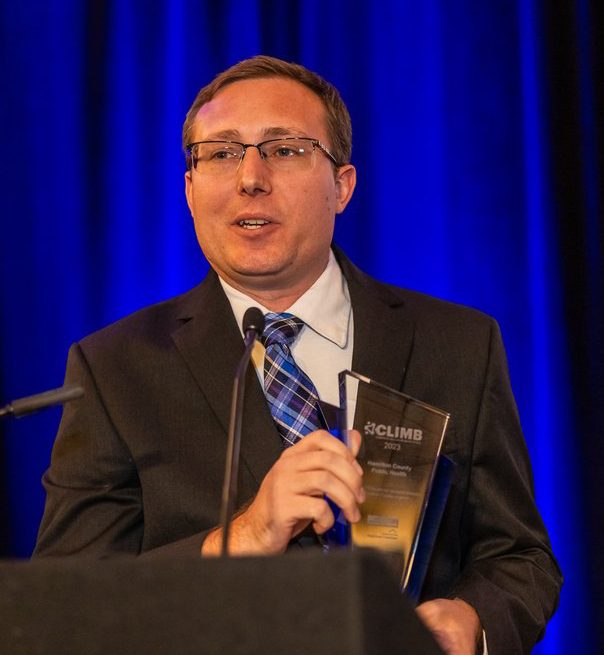
Employees of RFHC Workplaces are also provided a proprietary 24/7 helpline. Certification is free, and the benefits to employees and employers alike are notable. “What I hear from all of my colleagues and what we’ve seen internally with some of our own survey data is employers are reporting that there’s an improved morale among their employee base,” says Meenach. “There’s an improvement not only in morale, but in retention.”
Currently, 66 local employers are certified through RFHC. The program requires a yearly renewal procedure and has thus far secured a 100 percent retention rate, not including two businesses that closed since certification. Businesses range from mom-and-pop shops to large regional employers like Gorilla Glue, Messer Construction, and the City of Cincinnati.
Nationally, the recovery-friendly workplace paradigm was first introduced in 2018 in New Hampshire under then-Gov. Chris Sununu. The model has since been replicated more than 30 times across the country, but many are operated as nonprofits or through state governments; RFHC is one of the few maintained by a local government. “We’re often kind of held as a shining example of how to do this locally,” Meenach says. “We’ve been able to do things larger entities haven’t been able to do successfully because we have such a keen grasp on everything within our county.”
Like JBM, employers who implement programs that give second chances—whether for felonies or substance use—have much to gain from a business perspective, not just a humanistic one. “Most businesses are contending with substance use disorder in one way or another, whether they realize it or not,” says Meenach. Industries such as construction, food and beverage, and manufacturing report the highest percentages of recovery populations and oftten deal with decreased productivity, absenteeism, and turnover.
“An employer who fails to address that sizeable population, again, is going to lose a lot economically when it comes to turnover,” says Meenach. “It’s about recognizing that recovery over substance use disorder is a strength. These are people who have really gone to battle with their brains on biology, their naysayers, their demons, and they’ve come out victorious.”
When employers embrace the profound effect they can have on an employee’s life and create infrastructures to support those who are most valuable, it creates a healthier, more reliable business culture. By intervening or providing resources to those in recovery, employers may also be in a position to save lives.
“I think what a lot of employers don’t realize is how many cards they hold,” says Meenach. “There’s a lot of research indicating that employer- motivated intervention or employer- initiated intervention is more effective than family intervention, and that really makes sense if you think about it from a behavioral psychology perspective. An employer is giving that person the funding to essentially live their life the way that they want to life their life, right? You’ve got their health insurance. You’ve got their paycheck. You’ve got their ability to feed their family in your hands.”
In the big picture, recovery-friendly workplaces can even influence micro and macro economies. “I think it’s safe to reason that with such a significant number of people in this country identifying as being in recovery, it follows logically that being a recovery-friendly employer could result in better outcomes for employers and better consumer perceptions,” says Meenach. “It’s good for business, and it’s of course the right thing to do for employees. I always like to say that recovering citizens are resourceful, resilient, and ready to work.”
It’s just up to employers to give them a chance.
